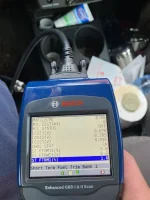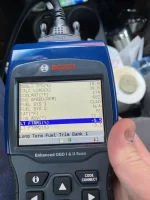2002 Ford Ranger Edge 3.0L 104k
Randomly while driving I’ll come to a stop at a light or stop sign and notice the truck is setting around 12-1500 rpm instead of the normal 700ish. At first I put the truck in neutral to see how it would react at a stop sign and it shot up to just over 2k rpm’s and putting it back in driving of course caused a hard jerk due to load. After restarting when leaving the store it was normal and no issues for the rest of the drive home.
IACV was replaced about a year and a half ago due to failure. A vacuum leak be constant I think.
Randomly while driving I’ll come to a stop at a light or stop sign and notice the truck is setting around 12-1500 rpm instead of the normal 700ish. At first I put the truck in neutral to see how it would react at a stop sign and it shot up to just over 2k rpm’s and putting it back in driving of course caused a hard jerk due to load. After restarting when leaving the store it was normal and no issues for the rest of the drive home.
IACV was replaced about a year and a half ago due to failure. A vacuum leak be constant I think.


